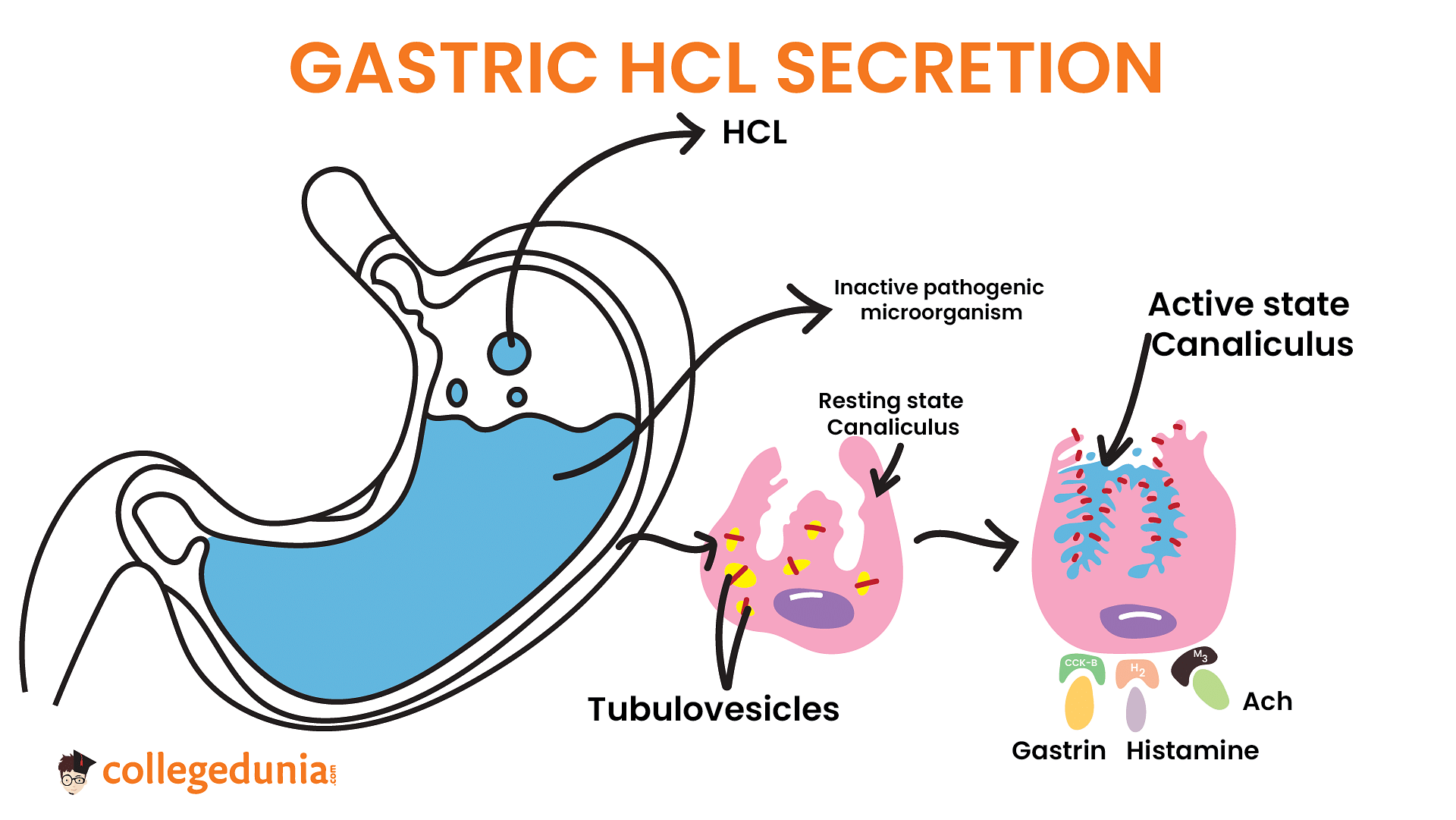Question
Biology Question on Digestion and absorption
In the stomach, gastric acid is secreted by the :
Parietal cells
Peptic cells
Acidic cells
Gastrin secreting cells
Parietal cells
Solution
The stomach's production of hydrochloric acid is controlled by parietal cells. The pH of the stomach is brought down to 1.5 to 2.5 by gastric acid.
In the presence of an acidic pH, this secretion is critical for the function of stomach enzymes.
Additionally, it is crucial for eliminating any pathogens that may be present in the food.
In the stomach mucosa, there are many tiny tubular glands. The epithelium of the gastric glands contains parietal cells, which are more prevalent on the side walls of the glands. They are also known as oxyntic cells because eosin causes them to stain so dramatically. They release hydrochloric acid and castle intrinsic factors, both of which are necessary for vitamin B12 absorption. In the stomach, HCl maintains a highly acidic pH of 1.5 to 2.5. This eliminates germs as well as any other potentially hazardous organisms that could be present in food.

Parietal or oxyntic cells release intrinsic factors and HCl, which causes the stomach's pH to be very acidic. Pepsinogen, which is secreted by parietal glands and changed into pepsin by hydrochloric acid, is also produced. Protein is digested as a result of pepsin. Protein digestion will be directly impacted if parietal cells stop functioning.
